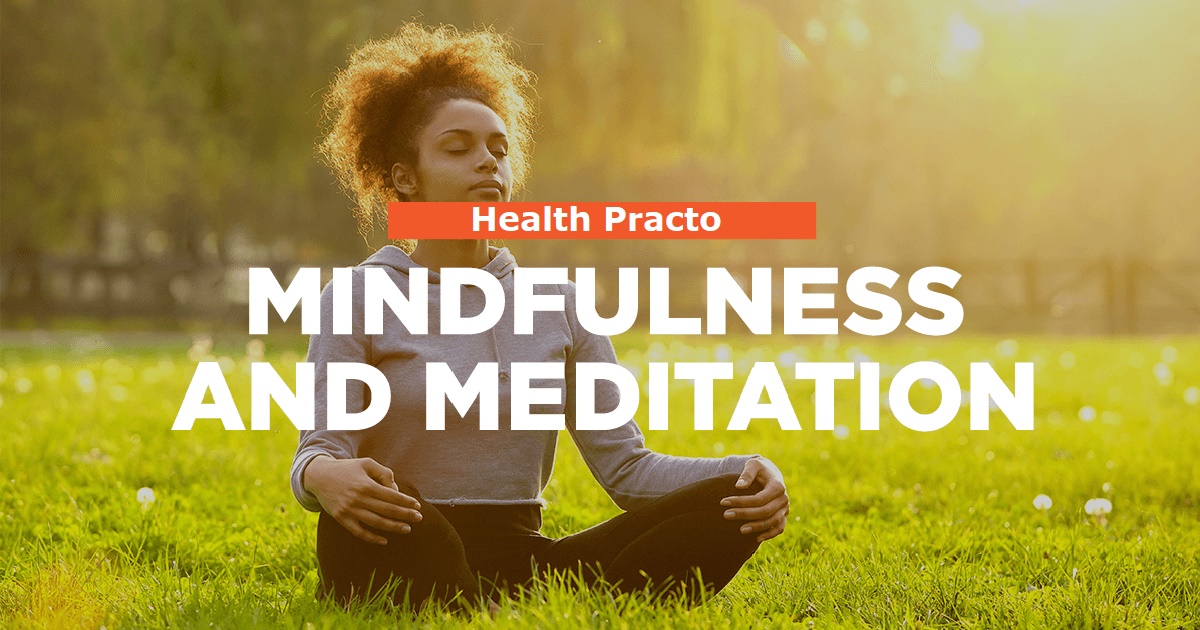Incorporating mindfulness and meditation: A Practical Guide
Mindfulness and meditation are closely related but differ in focus and application.
Mindfulness
– Mindfulness is the practice of being fully present and aware in the current moment without judgment. It involves paying attention to thoughts, emotions, and sensations as they arise.
– The primary focus of mindfulness is on cultivating a heightened awareness of one’s thoughts and experiences without attachment or aversion.
– Mindfulness can be applied in everyday activities, emphasizing the integration of awareness into daily life. It doesn’t necessarily require a specific time or posture.
Meditation
– Meditation is a broader term that encompasses various techniques and practices aimed at cultivating a state of relaxed concentration and heightened awareness.
– It often involves a specific focus, such as the breath, a mantra, or an object. Mindfulness meditation, a type of meditation, specifically emphasizes being present and aware of the moment.
– Meditation typically involves setting aside dedicated time for focused practice, often in a specific posture. It may have different forms, such as concentrative meditation, loving-kindness meditation, or mindfulness meditation.
In essence, mindfulness is a quality of awareness, while meditation is a broader term encompassing practices that cultivate this awareness. Mindfulness meditation is a specific type of meditation that focuses on developing mindfulness. Both can contribute to improved mental well-being and increased self-awareness.
Now lets, dive deeper into how you can incorporate these practices into your day-to-day life and embrace the benefits to their fullest.
Mindfulness in Real Life
1. Daily Tasks with Awareness Practice mindfulness during routine activities like washing dishes, walking, or commuting. Engage fully in the task, using your senses to experience the moment.
2. Mindful Eating Pay close attention to the flavours, textures, and sensations while eating. Avoid distractions and savour each bite, fostering a healthier relationship with food.
3. Emotional Regulation In real-life situations, use mindfulness to manage emotions. Instead of reacting impulsively, take a moment to observe your feelings, allowing for a more thoughtful response.
4. Mindful Listening Improve communication by practicing mindful listening. Focus on truly understanding the speaker without formulating your response in advance, fostering more meaningful connections.
5. Stress Management at Work Integrate mindfulness into the workplace by taking short mindful breaks. Brief moments of focused breathing can alleviate stress and improve concentration.
Meditation in Real Life
1. Morning or Evening Ritual Dedicate a few minutes each morning or evening to meditation. Create a quiet space, sit comfortably, and focus on your breath to start or end the day with a sense of calm.
2. Workplace Reset Use meditation as a tool for a mid-day reset. Find a quiet spot, close your eyes, and engage in a brief meditation session to refresh your mind and enhance productivity.
3. Mindful Walking Turn walking into a meditative practice. Pay attention to each step, your breath, and the surroundings, turning a simple walk into a moving meditation.
4. Mindfulness Apps Leverage technology for real-life meditation. Use mindfulness apps that offer guided meditation sessions, making it convenient to incorporate meditation into a busy schedule.
5. Stressful Situations During challenging moments, take a short meditation break. Close your eyes, focus on your breath, and allow yourself a moment of stillness to regain composure.
Benefits of Mindfulness and Meditation
Stress Reduction Both practices effectively lower stress levels, promoting a sense of calm and relaxation.
Improved Focus and Concentration Enhances cognitive abilities, sharpening focus and concentration by training the mind to stay present.
Emotional Well-being Foster’s emotional regulation, reducing reactivity and promoting a more measured response to challenging situations.
Better Sleep Quality Regular practice contributes to improved sleep patterns, aiding in the management of insomnia and promoting restful sleep.
Enhanced Self-Awareness Increases self-awareness by encouraging a non-judgmental observation of thoughts and feelings, leading to personal insight.
Mind-Body Connection Strengthens the connection between the mind and body, promoting holistic well-being.
Improved Relationships Enhances communication skills, empathy, and understanding, fostering healthier relationships.
Pain Management Can contribute to pain relief and better pain tolerance by altering perception and response to physical sensations.
Boosted Immune System Some studies suggest that mindfulness and meditation practices may positively impact the immune system.
Overall Mental Health Contributes to improved mental health by reducing symptoms of anxiety, depression, and other mental health conditions.
Incorporating mindfulness and meditation into daily life can lead to a myriad of positive outcomes for both mental and physical well-being.
Incorporating mindfulness and meditation into real-life scenarios can enhance overall well-being, improve focus, and provide valuable tools for navigating the complexities of daily living hence, it can indeed contribute positively to both physical and mental well-being.
